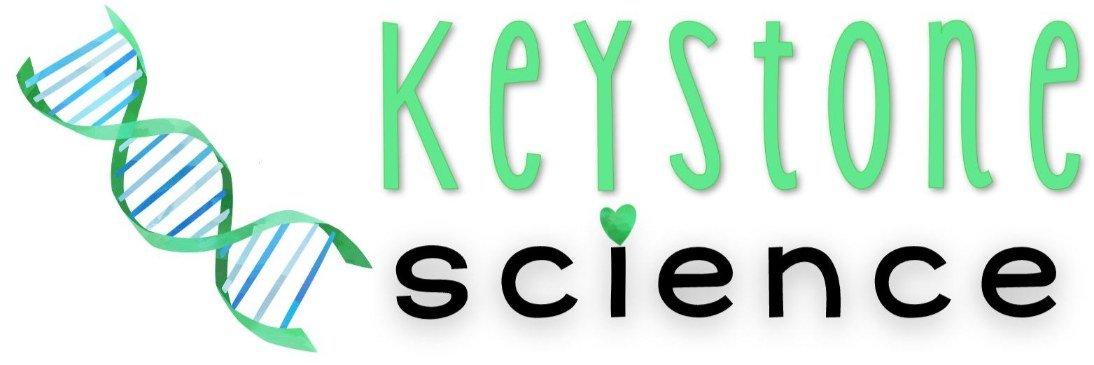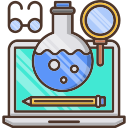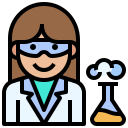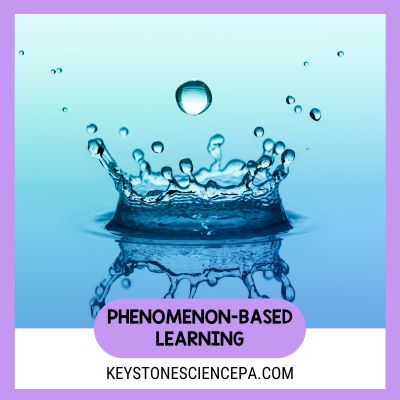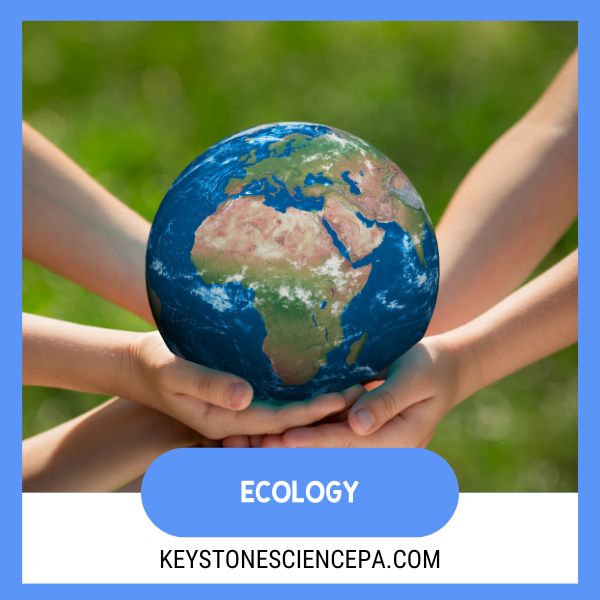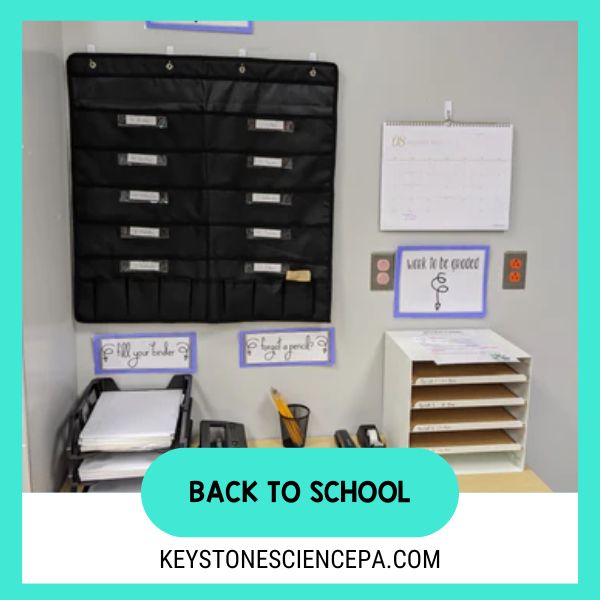A little over a decade ago, the Next Generation Science Standards (NGSS) were released. In the years since they were released, many – but not all – states have adopted (or even adapted) NGSS for their curriculum. The goal was to develop a greater interest in science among students while moving away from rote memorization and towards real-life application. This is easily said but difficult to implement if your education was not NGSS-aligned and your state, district, or school uses a different curriculum.
The main problem for teachers with all things is time. When is there time to adapt from a traditional curriculum to be NGSS-aligned?
But there are additional challenges and considerations too.
Incorporating an inquiry-based approach can take extra time on the calendar, let alone designing the lessons themselves.
Shifting a teacher’s role from the “sage on the stage” to the “guide on the side” can be challenging. This shift towards more student-centered learning can be challenging or uncomfortable for teachers who are accustomed to a direct instructional approach.
What’s also uncomfortable is watching students struggle and grapple with concepts in an NGSS-aligned curriculum. We know this is meaningful for learning but not all students are ready for this ‘new way’ so we need to figure out how to become that “guide on the side”.
There may be issues with balancing skills and content. We know that content is fundamental to students’ understanding of the underlying concepts to explain the observed phenomenon, yet NGSS focuses so much more on developing skills than just memorizing content.
This sounds like a lot to overcome, but that’s where this post comes in! It offers an easy, less time-consuming solution to start the process of transitioning to the NGSS.
Flipping Traditional Lab Protocols for NGSS
Adapting to NGSS means shifting from teacher-directed lab activities to more student-centered ones. One method is to start with the lab as the anchoring phenomenon and then guide students through the inquiry cycle. Starting with something that sparks students’ curiosity and moves them to ask questions is ideal.
In traditional science classes, you teach content and then do a lab to show that content in action. An easy transition to an NGSS-aligned classroom is to flip the script and do the lab before students have background knowledge. Not only is this method NGSS-aligned but students are more engaged because labs have a little more shock value if they don’t know what’s coming from the beginning!

After students collect data from the lab, they ask questions about their data and observations that are really meaningful to them. Developing questions after observing a phenomenon activates prior knowledge. Activating prior knowledge is the first step for students to figure out why what they just observed happened.
This approach emphasizes the cycle of inquiry where students guide their learning using their own driving questions and investigations. Then, they communicate their findings using the claim, evidence, and reasoning structured writing to explain the phenomenon using the data from the lab and the content they learned throughout the unit.
Hands-On Demos for Exploring Water’s Properties
Here’s how I use this approach in my unit on the unique properties of water and how they support life. First, students complete the Properties of Water lab; there are three stations and two teacher demos students observe and collect data over one class period.
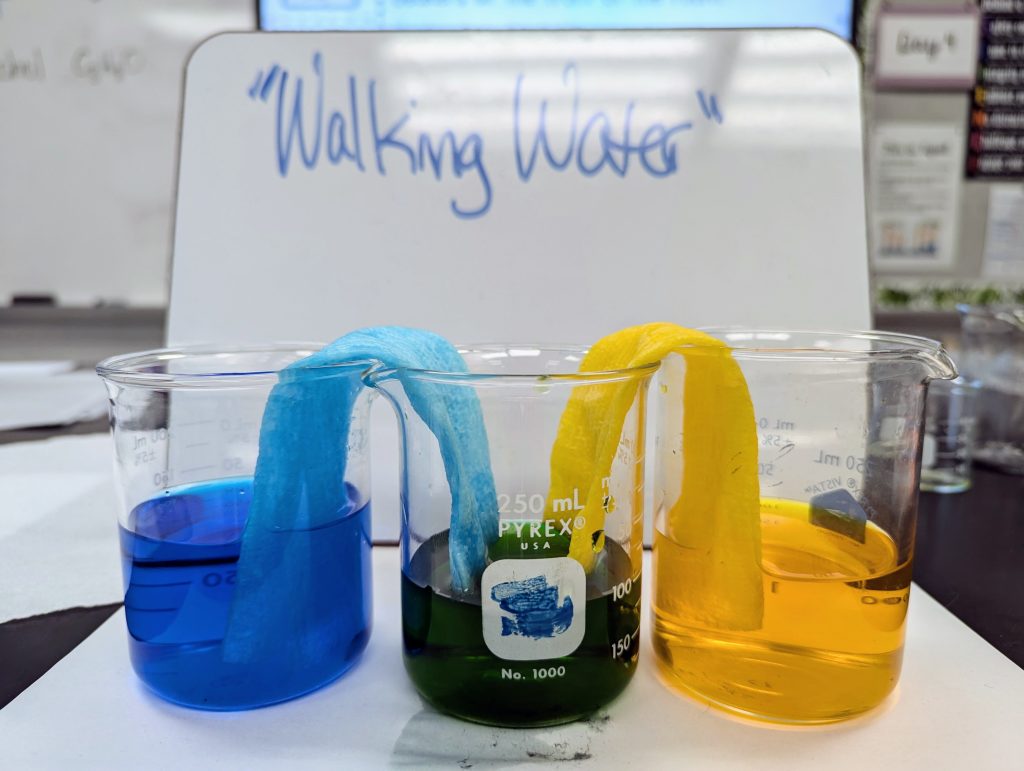
- Capillary action and how water uses cohesion and adhesion: This walking water demo uses water that’s dyed different colors with food dye and paper towels between three beakers. Students observe that the water moves through the paper towels from the two beakers on the end into the center beaker, which is empty.
A real-life application or connection is that humans/animals have hearts that move fluids around the body, but plants don’t have that. This gets students thinking about how plants get water from their roots up to their leaves, against gravity, which is where the water is needed.
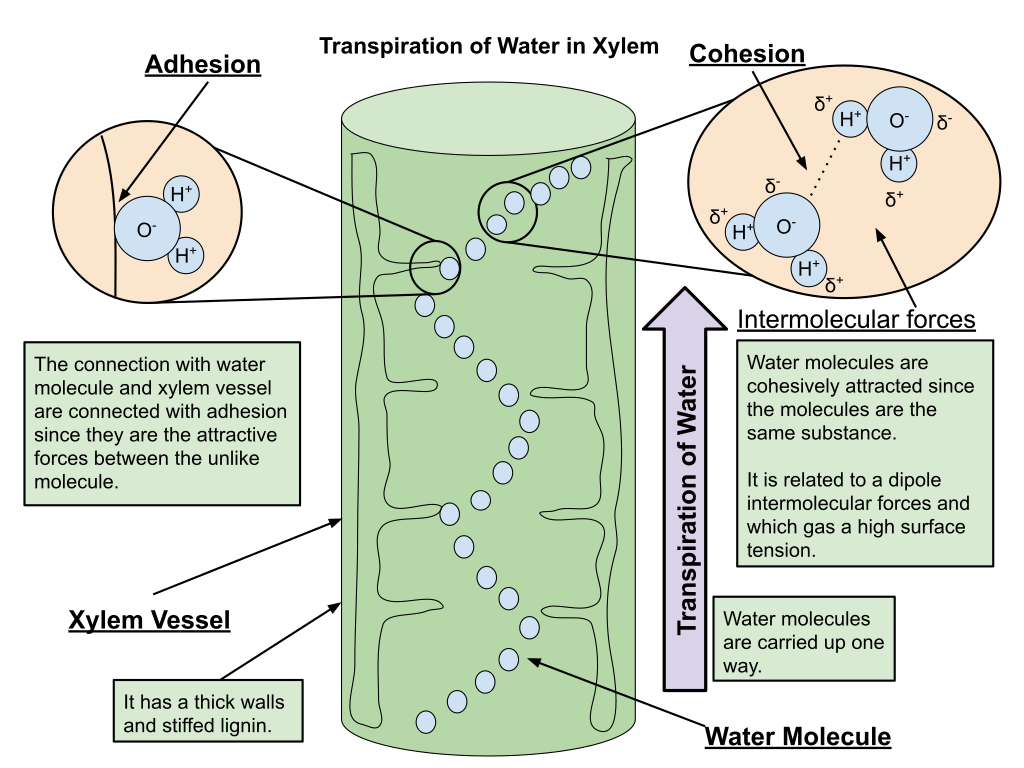
2. High surface tension of water: Students use a dropper to add drops of water onto a penny to see how many will fit before it spills over. Students repeat the procedure using rubbing alcohol or oil to see how the number of drops compares with water. The difference in the number of drops shows the high surface tension of water.
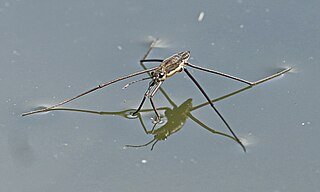
A real-life application or connection to this property is that some insects and macroinvertebrates rely on the surface tension of water so they can breed, lay eggs, or feed. The high surface tension of water allows these organisms to walk on its surface to do these vital life functions.
3. Solubility: Students add the same amount of powdered drink mix to water and rubbing alcohol or oil in separate beakers. Then, they compare how much drink mix the water dissolves vs. the rubbing alcohol or oil.
Water is called the universal solvent because of the array of substances it can dissolve. This is vitally important to living things because all chemical reactions that maintain life occur in a water-based solution; if water could not dissolve many different substances, these life-sustaining reactions would not be able to occur. If you want to share the complexity of these chemical reactions (metabolism) share this diagram with your students.
4. Density: Put both water and vegetable oil in the freezer. Remove the solid form of each and place them in their respective liquid forms; the ice goes into the liquid water, and the solid oil goes into the liquid oil. The oil from the freezer will sink to the bottom of the oil, which is what we expect but the ice cube will float! Students know the ice will float but may not realize this is odd behavior for the solid form of a substance to float in the liquid form.
A real-life application or connection explains how aquatic or marine organisms can survive in frozen bodies of water. Ask your students to consider what would happen if the ice in the picture below did not float; how would this affect the walruses? What about fish in freshwater environments; what would happen to the fish if ice did not float?
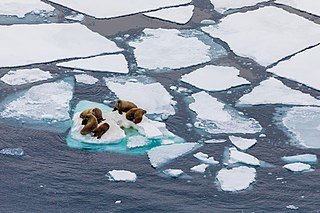
5. High specific heat of water: Save this one until the end! Inflate a balloon with air and fill a second balloon with water. Ask students to predict what they think will happen if both balloons are held over a flame. Students usually think both will pop which makes for a surprising outcome when the balloon filled with water DOESN’T POP. 🤯 Of all the stations, this one can lead to really deep questions.
A real-life application or connection is how animals use the high specific heat as a cooling mechanism (sweating!). When we sweat, the water on our skin absorbs the heat from our bodies.

Once the water gains enough energy, it evaporates and takes that heat with it. The heat from our body went towards transitioning that water into a gas, and that required energy. Once evaporation happens, that energy (in the form of heat) is transformed and removed from our bodies! Dogs use the same mechanism to cool themselves by panting.
Grab this FREE 5-page lab handout to guide your students through making observations, collecting data, and comparing the behavior of water with another substance.
Generating Questions and Group Analysis
As students work through the stations they should record their thinking. You could use a simple graphic organizer, like a T-chart, for students to record “I notice” and “I wonder” for each station.
Writing out their observations (I notice) and questions they have (I wonder) encourages students to think about what they are seeing and think critically about the WHY for each station. Students can expand their learning and collaborate with their peers by doing a think-pair-share activity with another group. After this activity, students will hear a variety of questions and make theirs more specific so they can further their own learning. Note: Not everyone needs the same question(s)! Students should have their OWN individual questions THEY are curious about.
After students share their “I wonder” questions, create a class driving question board. As students progress through the unit, they will answer some questions, expand on some questions, and create new questions, so keep this board visible and refer to it often!
The part of this process that is the most difficult for both the students and the teacher is giving students time to research investigate, and struggle or grapple with their questions and possible answers. This process of discovery if 3D learning at its finest and is key for implementing an NGSS-aligned learning environment.
This process will take more time early in the school year, but as students familiarize themselves with the process they will get more comfortable and confident with it. As the year goes on and you continue using this process with your students labs and demos will run more smoothly and be more timely.
Understanding Water’s Structure and Impact on Living Things
Revisit the concepts from the demos along with their questions to formulate answers to explain the structure of water and its properties.
You might need or want to cycle through this more than once since you want students to be clear in their explanations – written or verbal. The construction of their answer – their ability to explain the phenomenon – will reveal whether they clearly understand or not.
Sketchnotes can be a powerful yet accessible way for students to create their explanations and communicate them. A mix of visuals and wording can be a good entry point for many students; with a reminder of course that the quality of the artwork is not the objective!
Another approach I took this year was to have them do a macro drawing. Students drew – by hand or digitally – what they saw with their own eyes during the demos. Once completed, they did a micro-level call out of the content we were addressing and included the structure of water and how water’s unique properties contributed to its properties.
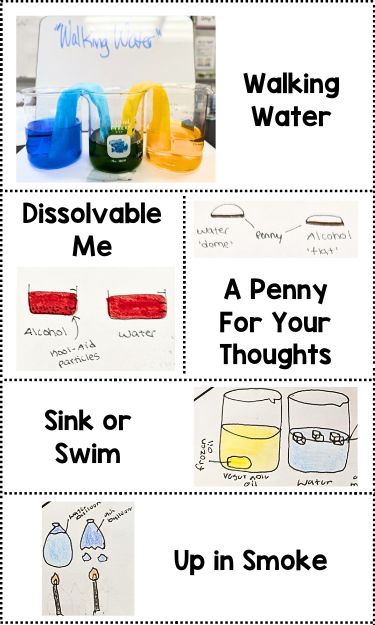
Making connections to phenomena in a visual way is an important step in an NGSS-aligned classroom; it makes your student’s learning and understanding visible for you, the teacher. For more ways to do this, check out this post about phenomena-based teaching.
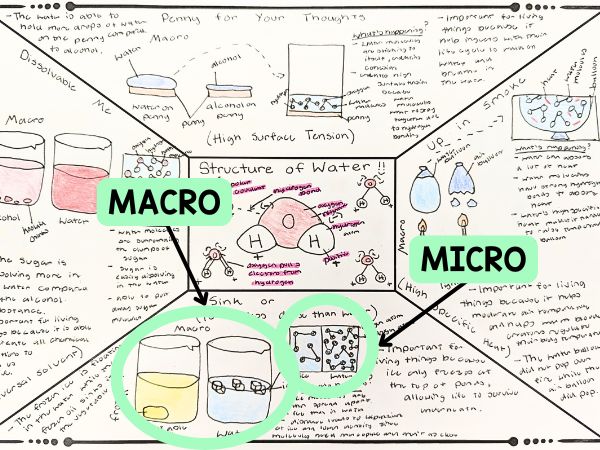
Adapting Labs for Inquiry-Based Learning
Adapting a lab for inquiry-based learning or to be more NGSS-aligned doesn’t require a total reinvention of the wheel. Instead, there is a more straightforward way to adapt existing resources.
Start small with existing labs. In this example, I used my existing properties of water lab and lessons but I shifted the sequence around to align with an inquiry-based NGSS approach.
Separate data collection from the analysis. Instead, insert a step in between to have students ask questions, do some wondering (not wandering!), and make connections.
Absolutely this will require an investment of time but it’s clear that it doesn’t have to be a big shift from what you already do! That old adage of working smarter not harder applies here for teachers that want to make manageable changes in their classroom approach.
Let’s Connect!
💡Feel free to explore Keystone Science for ready-to-use high school biology & ecology NGSS aligned notes and activities.
💡Subscribe to my email list for weekly tips direct to your inbox.
💡Follow me on Instagram for daily tips, motivation, and facts you can use in your classroom!
🌟Share in the comments or email me directly 👉🏻 [email protected]
